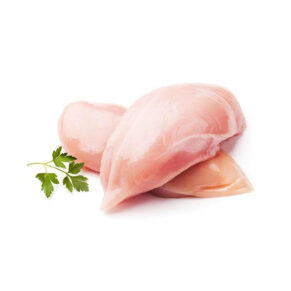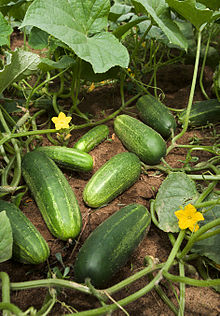The cucumber (Cucumis sativus) is a widely-cultivated creeping vine plant in the family Cucurbitaceae that bears cylindrical to spherical fruits, which are used as culinary vegetables.[1] Considered an annual plant,[2] there are three main types of cucumber—slicing, pickling, and seedless—within which several cultivars have been created. The cucumber originates from the Himalayas, China (Yunnan, Guizhou, Guangxi), and Northern Thailand,[3] but now grows on most continents, and many different types of cucumber are grown commercially and traded on the global market. In North America, the term wild cucumber refers to plants in the genera Echinocystis and Marah, though the two are not closely related.
| Nutritional value per 100 g (3.5 oz) | |
|---|---|
| Energy | 65 kJ (16 kcal) |
|
3.63 g
|
|
| Sugars | 1.67 |
| Dietary fiber | 0.5 g |
|
0.11 g
|
|
|
0.65 g
|
|
| Vitamins | Quantity
%DV†
|
| Thiamine (B1) |
2%
0.027 mg |
| Riboflavin (B2) |
3%
0.033 mg |
| Niacin (B3) |
1%
0.098 mg |
| Pantothenic acid (B5) |
5%
0.259 mg |
| Vitamin B6 |
3%
0.04 mg |
| Folate (B9) |
2%
7 μg |
| Vitamin C |
3%
2.8 mg |
| Vitamin K |
16%
16.4 μg |
| Minerals | Quantity
%DV†
|
| Calcium |
2%
16 mg |
| Iron |
2%
0.28 mg |
| Magnesium |
4%
13 mg |
| Manganese |
4%
0.079 mg |
| Phosphorus |
3%
24 mg |
| Potassium |
3%
147 mg |
| Sodium |
0%
2 mg |
| Zinc |
2%
0.2 mg |
| Other constituents | Quantity |
| Water | 95.23 g |
| Fluoride | 1.3 µg |

